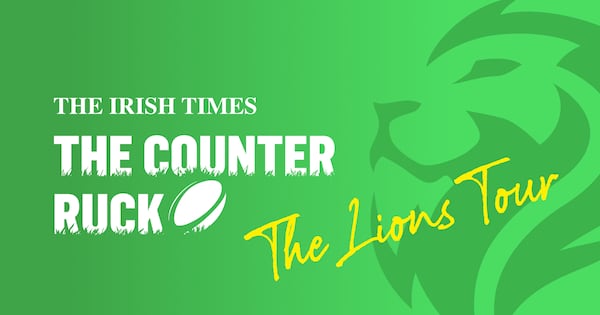Mack Hansen is a free spirit whether in civvies or his formal wear, a green rugby jersey, and it is that devil may care attitude that makes him a captivating, colourful character, and something of an outlier within the Ireland squad, strictly as a player.
Hansen’s Australian roots, the fact that he didn’t come through the Irish schools or club systems, means that he has added a different rugby motif to brand Ireland, a blending process that has appreciably enhanced the Irish team as an attacking entity.
Pushing to one side the fact that he is eminently quotable with his unfiltered observations, and therefore a popular interviewee, and focusing strictly on the rugby, Hansen’s instinct, his skill set, the footwork, handling, passing and aerial work have all been conspicuously impressive during the Six Nations.
But few would have envisaged that the Connacht wing would have turned into something of a creative hub in attack, a fact recognised officially in being shortlisted for player of the tournament.
READ MORE
Ireland scored 20 tries in the tournament, Hansen crossed for three and is down for one assist, recognising his input for Jack Conan’s try against Scotland, figures that fail to fully convey how much of a catalyst the soon to be 25-year-old proved for many of his team’s better moments in attack.
Hansen played all 400 minutes across the five matches, carried the ball on 50 occasions at an average of over six metres and won four turnovers. But it is the next two metrics that are most revealing when it comes to his input to Ireland’s attacking playbook.
The wing produced more offloads (six) and broke more tackles (14) than any of his team-mates. Working off the blindside wing in open play, he caused havoc in midfield, especially against Italy in Rome, but also in the Scotland match.
There are trace elements of his days as an outhalf in the way in which he carries the ball in two hands when he is attacking the line, his ability to square up or sit-down defenders and his timing of the pass.
A feature of Ireland’s attack, particularly from the Italian match on in the Six Nations, was an ability to punch holes coming down the short-side from rucks. Their eighth try in the tournament, the bonus-point one against France, is the first example, Caelan Doris fights to get his hands through the tackle and offloads superbly to Garry Ringrose, who still has plenty to do.
Italian coach Kieran Crowley acknowledged that Ireland had caused his team huge problems down the short-side of rucks in the first half that led to tries and a few that were left behind too. The genesis for James Ryan’s opening try is Bundee Aki getting between two defenders, popping a pass to Lowe who sends Ryan cantering over.
Hansen’s fingerprints are on Hugo Keenan’s try, popping up in midfield. Josh van der Flier’s break on the short-side is the precursor to Aki’s try, Lowe provided the scoring pass. From a ruck following a tap penalty, Ireland went to the blindside, Craig Casey and Stuart McCloskey’s quick hands put Hansen over for the try.
The Connacht wing scored the opening try against Scotland while his assist for Conan on the team’s third, once again down the narrow channel at a breakdown, encapsulates his footballing ability.
When Jamison Gibson-Park gets the ball into Hansen’s hands, the winger’s shimmy transfixes Duhan van der Merwe and that split-second hesitation and the Connacht wing’s perfectly timed and delivered pass to Conan, missing out Keenan guaranteed the try.
Ireland’s second and third tries in their Grand Slam decider against England also came from working back to the narrow side, Gibson-Park hits Aki, who puts Robbie Henshaw over untouched while for Dan Sheehan’s second try of the match, the home side ventured down the touchline on three occasions, the final one of which saw Conan’s superb offload put the hooker over.
The final try of the Grand Slam greenwash was another strike on the blindside, Rob Herring accelerating through a tackle from a lineout maul with both Conor Murray and Hansen poised to lend assistance that wasn’t required. Nine of Ireland’s 20 tries or 45 per cent came from working the largely narrow corridors.
As for Hansen, if you look at his input and that of Lowe and Aki, their points of difference as players has been invaluable in propelling Irish rugby to its current pre-eminence.













